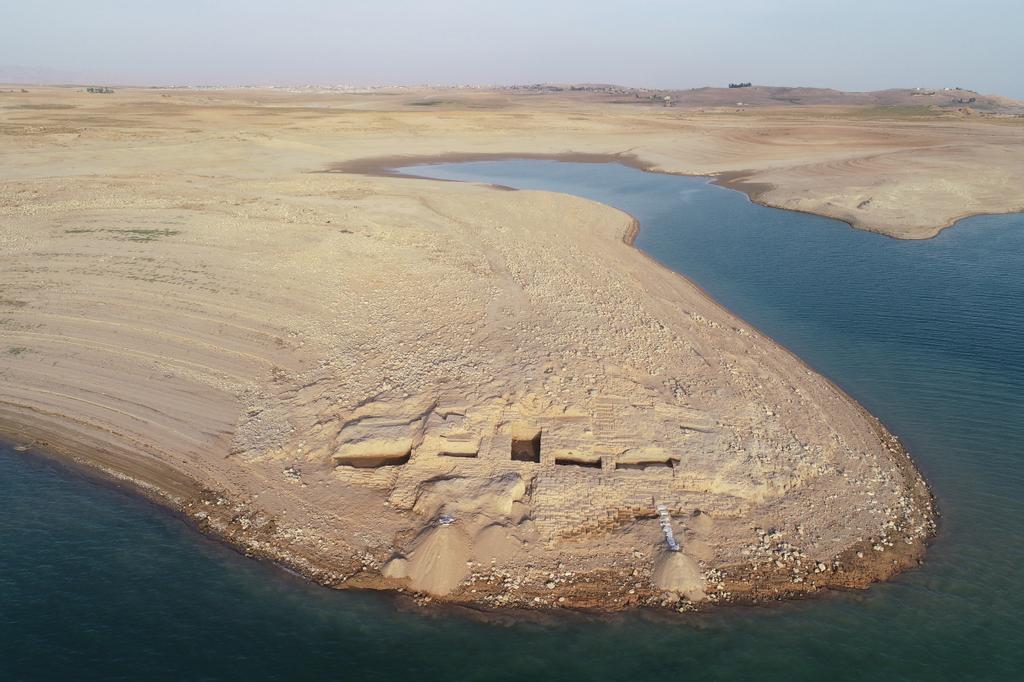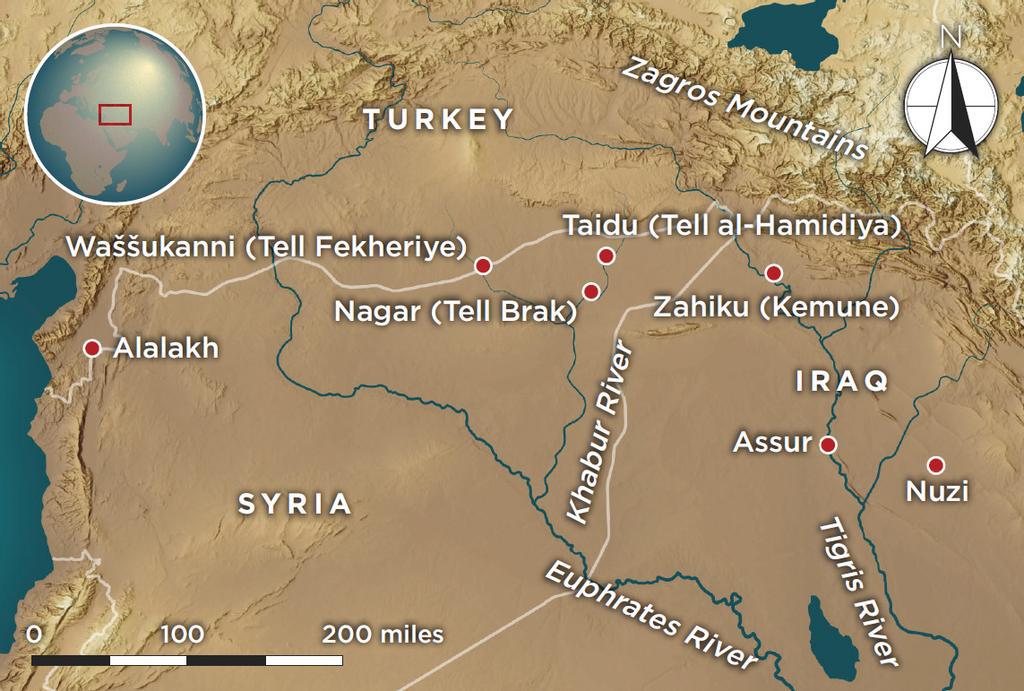

AS HER COLLEAGUES PREPARED to celebrate the holiday season in December 2021, Ivana Puljiz, an archaeologist at the University of Freiburg, received word that water levels in Iraqi Kurdistan’s Mosul Lake had dropped due to an ongoing drought, revealing the ruins of a settlement at the site of Kemune. The site had been submerged since the Mosul Dam was built in the 1980s to harness the Tigris River to generate electricity and provide water for irrigation. Along with Hasan Ahmed Qasim, chairman of the Kurdistan Archaeology Organization, Puljiz had led a four-week excavation at Kemune in September and October 2018, the last time the settlement had emerged from the lake. Before the water swallowed up the ruins, the team managed to excavate part of a mudbrick building that once stood atop a high mound and loomed over the east bank of the Tigris. The ancient builders had propped up the structure with a monumental terrace to keep it from sliding down the slope, and its interior walls measured up to seven feet wide. In two of the rooms the team excavated, they found rarely preserved traces of wall paintings, with red geometric motifs against a blue background.
The archaeologists also found several sherds of a distinctive type of pottery featuring light-colored designs against a dark background. Known as Nuzi Ware, this pottery helped establish that the building dated to the time of the Mittani Empire (ca. 1500–1330 B.C.), which reigned over a broad swath of the Near East in the mid-second millennium B.C. A cuneiform tablet unearthed in one of the rooms refers to goods belonging to a palace, making clear that the building was a royal residence of the Mittani period. “The palace must have looked very impressive,” says Puljiz, “both from the part of the city that was located in a lower area, but also for people


